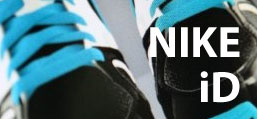
Madison Avenue has unleashed an onslaught of Augmented Reality products and services, notably Virtual Sean and Virtual Mirror. As with any new technology, it all comes down to execution, and so far almost all of my experiences have felt gimmicky. There are, however, some notable exceptions on which I’m keeping my eye: video gaming and mobile devices.
Nintendo’s Wii console proved to consumers that gaming can be experienced with natural gestures, escaping the shackles of traditional handheld controllers once and for all. Now, Sony’s Playstation Move and Microsoft’s Project Natal push the experience even farther with camera and motion-based systems that mimic a user’s every move. Stunning the game industry at the 2009 E3 conference, Microsoft’s Project Natal was demonstrated through games in which the user can interact with his environment using nothing more than natural body gestures. It uses an infrared sensor attached to the Xbox 360 console to track 48 skeletal points on a human body. This level of detail not only allows for tracking arm and leg motions, but even individual fingers and facial expressions, prospectively bringing to an end the era of stiff mugs that are part and parcel to ordinary gaming.
With a wand like the Wii and the keen motion-sensor detection of the Natal, the Playstation Move is the hybrid baby. Included in the Move package is a motion controller, a sub controller, and a camera that work together to make your gaming experience that much more rewarding. With the Move, virtual pets take on a whole new life: creatures can actually be played with and cared for using the Eye Toy camera which tracks your movement with that of your pet. Meanwhile, Move Party uses the camera to augment the player’s environment as the setting for the game, turning the motion controller into in-game objects such as hair clippers, a fan, and a fly swatter.
Another area in which Augmented Reality really shines is mobile devices. In this application, Augmented Reality combines GPS, cameras and website data to project digital data into the real world. A particularly exciting option for the iPhone is Wikitude, which allows users to get real-time information on their current location using multiple sources like Google Local, City Search, and, of course, Wikipedia. With Wikitude, a new travel destination becomes the user’s oyster, info on historical monuments, local tweets, and restaurant recommendations all available in a snap.
Another handy program for mobile devices is NY Nearest Subway, a tool that visualizes the train stations closest to your present location. The app displays 3D overlays onto camera imagery with the color coded subway lines and station names, along with arrows pointing in the general direction. Press your desired train station and the app will generate a route via Google Maps.
Augmented Reality is in its infancy and the usage interaction models are still being crafted. Given the technology’s cusp status, it’s a tough call whether gamers will embrace control schemes using body gestures and location tracking over a Dual Shock controller, and a lot of the potential uses for apps such as Wikitude are highly dependent on third party sources, meaning that the technology isn’t seamless enough to deploy right now. Considering the obstacles, Augmented Reality may take a while to hit the main stream, but programs fitted to the human body and apps that enrich reality are far too creative and useful to be sheer gimmickry.
Previous Post: Close Encounters with Tribal Aliens: Yeasayer in Sala Caracol
Next Post: J. Crew Goes Darkly into Men’s F/W 2010
Tags: gadget · TechnologyNo Comments




 ShareThis
ShareThis















0 responses so far ↓
There are no comments yet...Kick things off by filling out the form below.